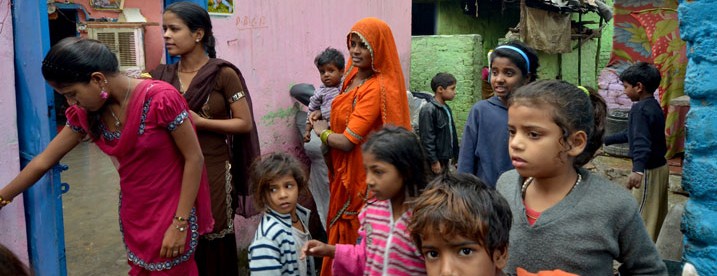By Joseph Spanjers, January 20, 2015

As a Percent of GDP, Sub-Saharan Africa Suffers the Largest Illicit Outflows of Any Region in the World
Global Financial Integrity’s (GFI) latest annual report on illicit financial flows–released just last month–estimates the volume of illicit financial outflows from the developing world from 2003 to 2012. It is the first report to estimate these flows for 2012, when they reached a record US$991.2 billion.
Already, this US$991.2 billion figure is being cited quite a bit; it is the main figure cited in many of the articles of we’ve seen on the report in the media. Take, for example, this story in The Guardian, this article from Reuters, or this piece in The Wall Street Journal. It’s the big, flashy, almost-trillion dollar number.
However, I’d like to draw your attention to a different figure, one that emphasizes even more clearly the implications of illicit financial flows on development: 5.5.
By Raymond Baker, November 25, 2014

By Any Measure, Illicit Financial Flows Pose a Devastating Challenge to Developing Countries and Human Lives
Thomas Pogge—Professor of Philosophy and International Affairs at Yale University, Director of the Global Justice Program, President of Academics Stand Against Poverty (ASAP), and member of the Board of Directors of Global Financial Integrity (GFI)—has estimated that 18 million people die each year of economic deprivation and causes stemming therefrom. His calculation is based in good part upon estimating the number of people dying from preventable diseases.
GFI estimates that US$1 trillion a year of illicit financial flows drains from developing countries into western accounts. Our estimate is based on balance of payments and balance of trade data filed by governments with the International Monetary Fund (IMF), the same data that is used by millions of people every day in making decisions about investments, loans, interest rates, exchange rates, and more. We believe that our data is very conservative because it does not include major components of illicit outflows, which do not show up in official statistics.
18 million people dying a year is around 50,000 people a day. US$1 trillion a year is roughly US$3 billion a day.
On this day, how many of the 50,000 people will live, if the US$3 billion stays home?
By Joseph Spanjers, November 21, 2014

Mexico and Bangladesh Voice Support for a Clear Target on Curbing Illicit Financial Flows on the Sustainable Development Agenda
The United Nations is in the process of forming the post-2015 development agenda. These proposed Sustainable Development Goals (SDGs) will eventually replace the Millennium Development Goals (MDGs) that were agreed upon for 2000-2015. As with the MDGs, the SDGs will inform which development issues take priority in the coming years.
Sustainable Development Goal 16.4, as is currently proposed by the UN’s Open Working Group, calls on the international community to:
“by 2030 reduce illicit financial and arms flows, strengthen recovery and return of stolen assets, and combat all forms of organized crime.”
Global Financial Integrity (GFI) applauds the Open Working Group for considering illicit financial flows in its proposal. Though Goal 16.4 is definitely a start in the right direction, it is not exclusively focused on illicit financial flows, nor is it measurable in the least. GFI proposes the following as an alternative:
“by 2030, reduce illicit financial flows related to trade misinvoicing by 50%.”



